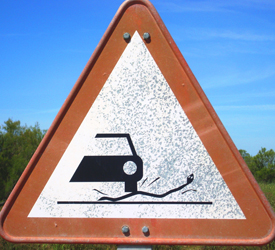Road-kill is the most recognized impact of traffic and an important threat for biodiversity. Nevertheless, most research on this topic deals with particular species or with road features, describing proximate correlates and rarely making inference on the mechanisms. Here it is provided a more general approximation by describing life-history, temporal and spatial factors affecting vertebrate road-kills in Mediterranean landscapes, a biodiversity hotspot with little studied road impacts. During one year authors recorded the casualties found on paved roads within Doñana Natural Park. More than 2300 road-kills belonging to 66 species (32% of the study area checklist) were found, with abundant ectotherm species more likely to be road-killed. The temporal and spatial factors affecting the road-kill patterns of different taxonomic and functional groups were also investigated. The phenology of the species was the main factor affecting road-kill temporal patterns for lizards, all birds and small mammals. Additionally, rainfall events were associated with the road-kill peaks of wintering birds, whereas high temperatures were related to the increase of road-killed snakes and the decrease of road-killed amphibians. Amphibians, snakes, lizards and small passerines were mainly road-killed according with their spatial abundance. Mitigation measures such as wildlife road-crossing structures showed contradictory effectiveness for small vertebrates due to the lack of adequate drift fences. Authors suggest prioritizing the mitigation measures which can permanently decrease the risk of been road-killed for ectotherm species, such as specific road-crossing structures with effective drift fences on road-kill hotspots. Concurrently, group-specific temporal mitigation measures should be applied during the road-kill seasonal peaks. The present work provides recommendations to decrease road-kill impacts in Mediterranean environments, but simultaneously tries to contribute to a more general development of road ecology research, suggesting several useful guidelines to perform road-kill studies. informacion[at]ebd.csic.es: D'Amico et al (2015) Vertebrate road-kill patterns in Mediterranean habitats: Who, when and where. Biol Conserv 191: 234–242 DOI: 10.1016/j.biocon.2015.06.010
http://www.sciencedirect.com/science/article/pii/S0006320715002335

 Open Call for Research Projects in ICTS-Doñana!
Open Call for Research Projects in ICTS-Doñana!



